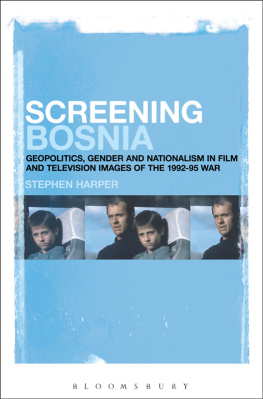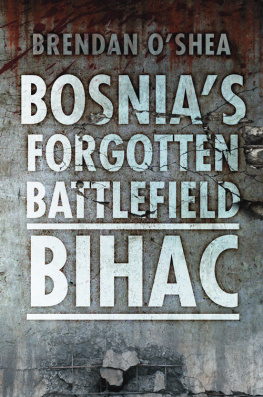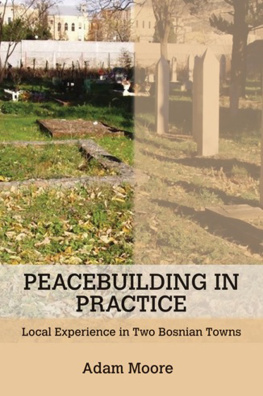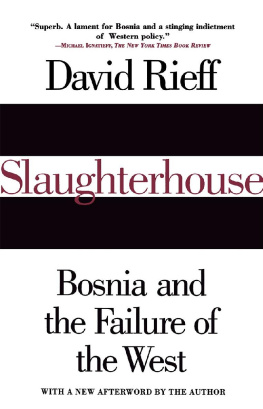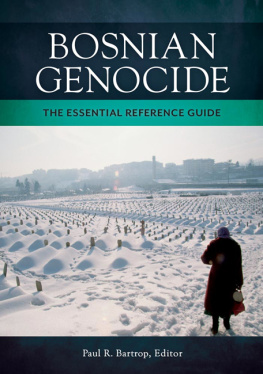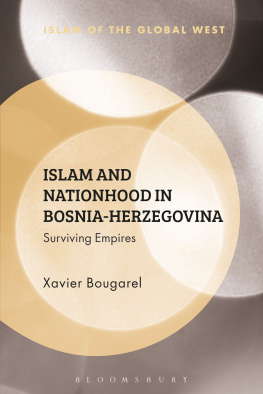Acknowledgments
This book is an expanded chapter from an unpublished manuscript, The arija Mosque: Language and Meaning . The author and the Zagreb publisher of the original, Albert Goldstein, had long discussions about the manuscript, during which the idea of expanding this chapter into a separate book came up. Work on the book profited in various ways from the help of Miralem Brki, Medina Hadihasanovi-Katana, Amra Hadimuhamedovi, Safet Hadimuhamedovi, eima Hodi, Mujo Koti, Ognjen Materi, Amer Medar, Hazim Numanagi, Irena aravanja, Aida unje, Asim Zubevi, and most of all, Halida Mahmutehaji. The author owes them all his gratitude. It is due to the kind determination of Simona Goldstein to carry out the will of her father, who died in June 2007, before the book was finished, that the original of this book reached the press.
On first encountering the book, Desmond Maurer suggested to the author that it should be translated into English. It was as a result of this that this translation was completed in the summer of 2010. Cooperation with the translator and discussion on many of the topics in the book and others related to it proved examples of the values which the open margins of any manuscript demand. The author is both grateful and indebted to him and to everyone at World Wisdom publishers, particularly Michael Fitzgerald, Mary-Kathryne Steele, and Clinton Minnaar. The author also owes his sincere gratitude to his dear friends and respected colleagues Ivo Banac and Seyyed Hossein Nasr for their contributions to presenting this book to a wider world public.
Post scriptum
The author is the owner of all the drawings and photographs presented in this volume. The photographs on pages 139 and 144 were taken by Leopold Goldstein in or around 1870. It is not known who the photographs on pages 135, 140, 145, 193, and 195 are by. Judging by the look of the buildings and the town, they date from the late nineteenth or early twentieth centuries. The photographs on pages 138, 142, 151, 196, and 198 were taken for this book. The drawings represent the town as it looked before 1878. It is not known who drew them.
Afterword
Given the modern project of disenchanting the world, most people today will be astonished by any claim that Stolac and its arija represent a city of the Spirit or a sacred city. Such astonishment can only be understood if we consider the people who have inherited and built the town over the centuries and how they viewed it. This disenchantment or desanctification of the world, which has taken place principally in people, has rendered many cultures unintelligible and as such surplus to requirements. Their heirs have rejected and destroyed them out of their own ignorance.
The entire Stolac valley (with its arija , mosque, and mihrab , which signify our role as foci of the world), has been progressively destroyed through the twentieth century. This process of destruction has reflected the condition of those humans to whom this sacred architecture and all its contents were entrusted as their most valuable inheritance. The framework of this distortion of the human self and the consequent destruction of their cultural heritage has been the three modern ideologiesnationalism, communism, and fundamentalism. Although differing and mutually opposed, they share one and the same essence. The destruction of the Stolac valley through the long twentieth century is proof of this.
If one is to understand any culturethat is to say, grow into its meaningone must have love for it. Love is the attraction of what loves for what is loved. This attraction does not allow the lover to be satisfied until he becomes what he loves or comes to know it in its entirety, and so becomes what he knows and knows what he is. Something may be loved only if it reveals itself to its lover through beauty, which bears witness to value independent of time, place, and the forms in which it appears. Every true culture contains and reveals one and the same value, as its material, imaginal, and spiritual content, without which we cannot reach self-realization. These contents are not the purpose of our love. They are simply the constant self-disclosure of Him who it is ours to love in everything and all people, but who may never be reduced to what exists or to the finite.
Every true culture is the harmony of two wills, the human and the divine. Both in what we do and where we do it, we reveal ourselves as beings of conscience, will, and power in the world which has been given to us and into which we have been sent down as into the center. At every moment and in every place, we are that centerboth as an individual and as the epitome of all existence since always and forever.
The architectural integrity of the Stolac arija , with the mosque at its center, is framed, when the valley is viewed from a distance, by graveyards to the west, south, and east. The arija and its mosque are the low point of the valley. All the hillsides come together at this flat point of the valley, as do the paths between them. The slopes let themselves down more or less steeply from the hilltops, transforming into the gentle inclines of garden and courtyard, alleyway and street, as they approach the bottom of the valley.
They say that there are 19 paths on the hillsides, which surround the Stolac valley. It is by them that one descends into the valley or rises up from it. There is the same number of pillars on the arija mosque. This number signifies the holy name of the Single One. By it we are called to bear witness amongst the multitude of things in the world and the eternal flux that everything comes from Unity and returns to it. This confession is brought to the fore in our descent and return: we were created on the most beautiful height, in the garden of paradise, with universal plenty as the gift of God. The inviolate center of the garden was marked by the tree which God, the Creator and Ruler of the garden, showed to us as the focus of everything which He had revealed through the creation of the heavens and the earth. We violated this center and lost our original purity and our most beautiful uprightness, of which we are reminded by the hilltops and the sublimity of the clouds within the horizons of this world and by Intellect, Spirit, and Light within our own selves, concentrated in the Praised as the most beautiful example.
The insult to the center of paradise brought about the Fall or descent from the most beautiful height to the lowest depth. In this way, we came to the lowest depth, but we preserved in ourselves the recollection of our sublime origin. In our most profound central core, we remember the beauty of our original creation and yearn for it, and try to find it in the world and beyond it, in ourselves and beyond that too. This return is the key question for humanity, as the essential element of all knowledge and all skills and arts, all ways, and all virtue. It is contained in Gods words:
Thereafter Adam received certain words from his Lord and He turned towards him; truly He turns, and is Ever-Merciful. We said, Get you down out of it, all together; yet there shall come to you guidance from Me, and whosoever follows My guidance, no fear shall be on them, neither shall they sorrow. As for the unbelievers who cry lies to Our signs, those shall be the inhabitants of the fire, therein dwelling forever.
And now we are herethe low point of our soul in darkness, its peak entirely illuminated, with the earth and our grave on it, and Gods throne entirely illuminated. Now we are here, at the low point of the valley, at whose center is the battlefield on which we attempt to overcome everything that would prevent us from returning to the most beautiful height. Facing us, at the other end of the valley, is the peak with its mosque. All roads lead to that mosque; each one of them beginning and ending in Unity. Everything around, all the hills and the passages, determine and limit the soul, which wants to return to its Lord in peace. Participation in this return, finding ourselves in whatever is, is the happiness of discovering the unending and always new divine self-revelation in the creation of everything from each moment to the next. This is the knowledge of all the names.


